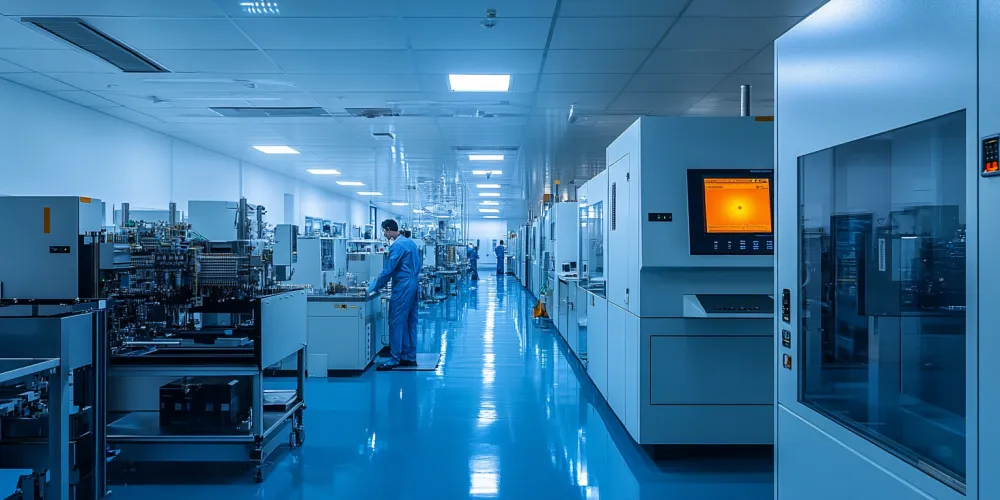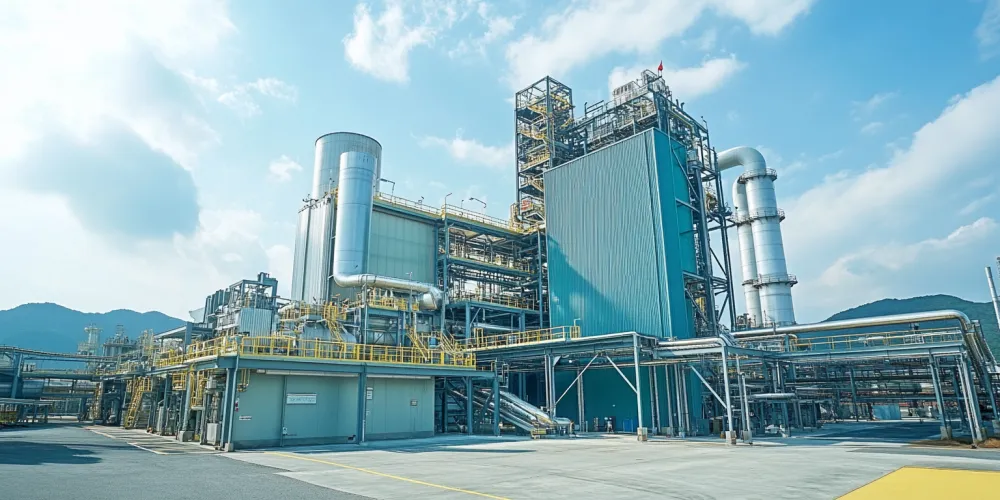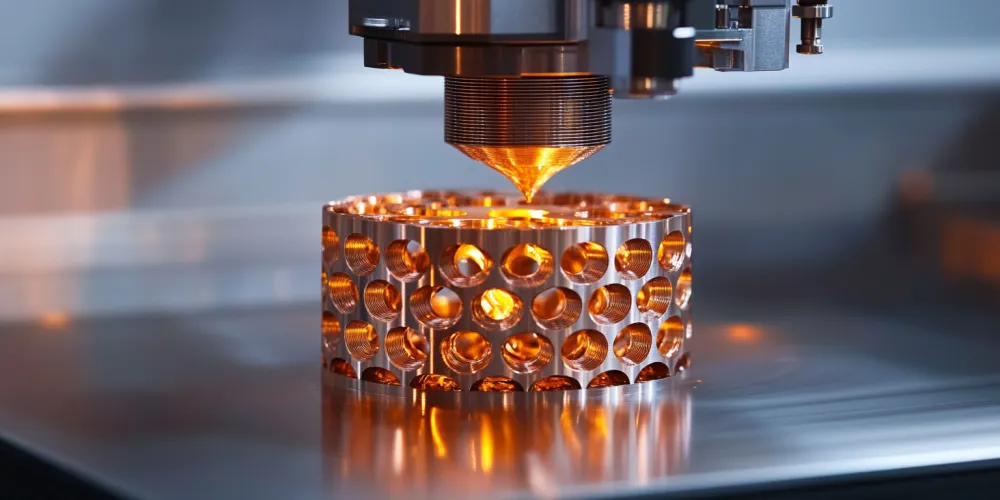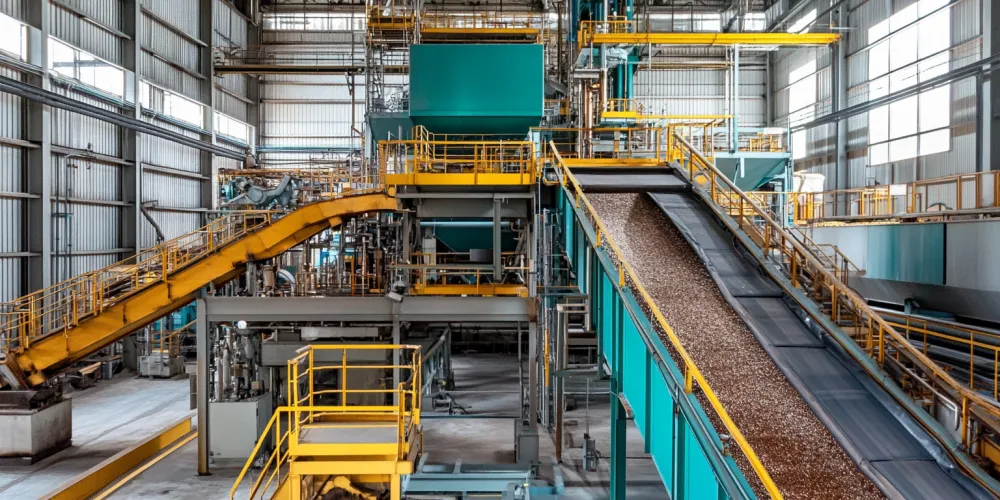High-Conductivity Silver-Plated Copper Powder Outperforms Traditional Materials in 5G Communication Equipment
Last updated on August 13, 2024

Breakthrough in Innovative Materials
In the wave of technology, material innovation is like a golden key that opens the door to the future.
As 5G technology rapidly advances, enhancing the performance of communication equipment has become a focus in the industry. The application of silver-plated copper powder in 5G communication equipment has achieved breakthrough progress. This new material not only surpasses traditional materials in conductivity but also excels in multiple key indicators, opening up new possibilities for improving 5G equipment performance.
The main features of this high-conductivity silver-plated copper powder include:
- Ultra-high conductivity: Conductivity is improved by more than 30% compared to traditional copper powder.
- Excellent processing performance: The powder has good flowability and can be evenly distributed on various substrates. The low sintering temperature makes it compatible with more types of substrates.
- Outstanding oxidation resistance: The silver layer provides effective oxidation protection, extending the material's lifespan. It maintains stable performance even in high-temperature and high-humidity environments.
- Environmental performance: The production process reduces the use of harmful substances. The material itself is recyclable, aligning with the concept of a circular economy.
After three years of effort, the research team overcame technical bottlenecks in the silver plating process by adopting innovative electrochemical deposition technology, achieving uniform silver coating while ensuring the integrity of the copper powder core. This unique core-shell structure not only enhances the material's conductivity but also significantly improves its stability and reliability in practical applications.
During the material testing phase, this new silver-plated copper powder exhibited excellent performance across various indicators. For example, in high-frequency signal transmission tests, its signal loss was reduced by more than 25% compared to traditional materials. This performance improvement is particularly significant for key components such as antennas and filters in 5G equipment.
Application Effects
As 5G technology rapidly develops, the demands on communication equipment performance are continuously increasing. This high-conductivity silver-plated copper powder has demonstrated outstanding results in actual applications, successfully addressing many of the challenges faced by traditional materials in 5G environments.
In 5G communication equipment, this new material is mainly applied in the following areas:
- Antenna systems: Used in the production of high-frequency PCB boards, improving antenna signal reception and transmission efficiency. It performs particularly well in the millimeter-wave band, reducing signal loss by more than 30%.
- Filters: Applied in the manufacture of high-frequency filters, enhancing signal selectivity and purity. In frequencies above 60GHz, the Q-factor increased by 20%, significantly improving filtering effects.
- RF connectors: Used in the production of high-performance connectors, reducing signal loss during transmission. In high-frequency, high-power environments, the connector's insertion loss was reduced by 15%.
- Electromagnetic shielding: Used in the production of high-efficiency EMI shielding materials, improving the equipment's anti-interference capability. Shielding effectiveness in the 5G band was enhanced by 25%, effectively resolving signal interference issues.
In practical applications, 5G base station equipment using this new material showed significant performance improvements. For example, in a field test conducted in Taipei, base station equipment using the new material demonstrated noticeable improvements in signal coverage, data transmission rate, and stability.
Specific results include:
- Signal coverage expanded by approximately 15%.
- Average data transmission rate increased by more than 20%.
- Network stability during peak hours improved by 30%.
These improvements not only enhance the user experience but also save operators significant base station construction costs. It is estimated that adopting the new material can increase the coverage area of a single base station by approximately 10-15%, meaning that around 10% fewer base stations are needed in the same area, significantly reducing construction and operating costs.
Additionally, the new material also performs well in terms of power consumption. With the same signal coverage and performance indicators, equipment using silver-plated copper powder saves approximately 15% in energy consumption compared to traditional equipment. This not only reduces operating costs but also lowers carbon emissions, aligning with the concept of green environmental protection.
Technological Innovation and Future Development
The development of high-conductivity silver-plated copper powder has demonstrated strong technological innovation capabilities. The success of this technology not only marks an important breakthrough in the field of materials science but also injects new vitality into the entire 5G industry chain.
In terms of technology, this innovation mainly manifests in the following areas:
- Nanometer-scale coating control: Developed unique pulse electroplating technology, achieving nanometer-scale silver layer thickness control. The uniformity of the silver layer thickness reached ±5nm, greatly improving material performance consistency.
- Core-shell structure optimization: By adjusting the ratio of copper core to silver shell, the optimal balance between conductivity and cost was achieved. Innovative interface treatment technology enhanced the bonding strength between copper and silver, improving material stability.
- Surface modification technology: Advanced plasma treatment was used to improve the dispersion and flowability of the powder. A dedicated surface activator was developed to enhance the material's compatibility with various substrates.
- Mass production process: An automated production line was designed to ensure quality stability during large-scale production. An online monitoring system was introduced, achieving full-process quality control.
Looking to the future, the development of this technology will focus on the following areas:
- Short-term goals (1-2 years): Further improve the material's conductivity, aiming to increase the current level by another 10%. Meanwhile, optimize the production process to reduce costs.
- Mid-term goals (3-5 years): Develop a new generation of multifunctional coating materials, such as silver-plated copper-graphene composite powder, to further enhance material performance in high-frequency, high-power environments.
- Long-term goals (5-10 years): Explore the application possibilities of new conductive materials in future communication technologies such as 6G and terahertz communication.
Market Prospects and Industry Impact
The introduction of high-conductivity silver-plated copper powder not only represents a technical breakthrough but also holds vast market potential. As 5G technology rapidly spreads and the Internet of Things (IoT) flourishes, the demand for high-performance communication materials is rapidly growing. According to market research, by 2025, the global market for 5G-related materials is expected to reach $50 billion, with a compound annual growth rate of over 30%.
In this context, the new material has the following market advantages:
- Performance advantage: Outperforms traditional materials in several key indicators, meeting the demands of 5G high-frequency, high-speed transmission. Its excellent stability and reliability reduce equipment failure rates and maintenance costs.
- Cost-effectiveness: Although the unit cost is slightly higher than traditional materials, considering the performance improvement and extended lifespan, the overall cost-effectiveness is higher. It can help customers reduce the total cost of ownership (TCO) of equipment.
- Environmental advantage: Meets international environmental standards, fulfilling global market demand for green products. High recyclability helps customers achieve environmental management throughout the product lifecycle.
- Technical leadership: Multiple core technologies have independent intellectual property rights, creating high technical barriers. Continuous R&D investment ensures the technology's ongoing advancement and leading position.
Based on these advantages, the market expansion plan for the new material will focus on the following areas:
- In the Taiwan market, the goal is to increase market share to over 50% within the next two years.
- In international markets, especially in countries like Japan and South Korea, where 5G is developing rapidly, the plan is to establish strategic partnerships.
- Explore business expansion opportunities in emerging markets such as Southeast Asia.
The introduction of this new material not only opens up new growth points in the field of materials science but also has a profound impact on the entire industry chain:
- Upstream raw material suppliers are motivated to develop higher-quality raw materials.
- Downstream equipment manufacturers can develop higher-performing 5G equipment.
- End users, such as telecom operators, can provide higher-quality network services.
Social Impact and Future Outlook
Technological innovation not only transforms industries but also changes lives and shapes the future.
The application of high-performance materials will accelerate the spread of 5G networks, providing a better network foundation for emerging applications such as smart cities, telemedicine, and autonomous driving.
Specifically, this innovation may bring the following social benefits:
- Improved communication quality: Faster network speeds and lower latency improve daily communication experiences. Better network coverage in remote areas reduces the digital divide.
- Promotes industrial upgrading: Provides better network support for the application of emerging technologies such as IoT and AI. Stimulates innovation in related industries and creates new job opportunities.
- Facilitates smart city development: Supports projects such as intelligent transportation and smart energy management. Increases urban management efficiency and improves citizens' quality of life.
- Supports green development: Efficient communication networks can reduce unnecessary traffic and energy consumption. Supports low-carbon lifestyles such as remote work and distance learning.
Looking forward, the development of this technology will extend to a broader range of application areas:
- Establish a "5G Innovation Application Fund" to support entrepreneurial projects and technology development in related fields.
- Promote the formulation of international standards to enhance global influence in the development of 5G and subsequent communication technologies.
- Strengthen cooperation with related industries to jointly promote the application of high-performance conductive materials in fields such as medical instrument conductivity and EMI shielding.
This combination of technological innovation and social development lays a solid foundation for future communication technologies. We believe that with the emergence of more similar innovations, future communication networks will be faster, more stable, and more environmentally friendly, driving society towards a smarter and greener future.







